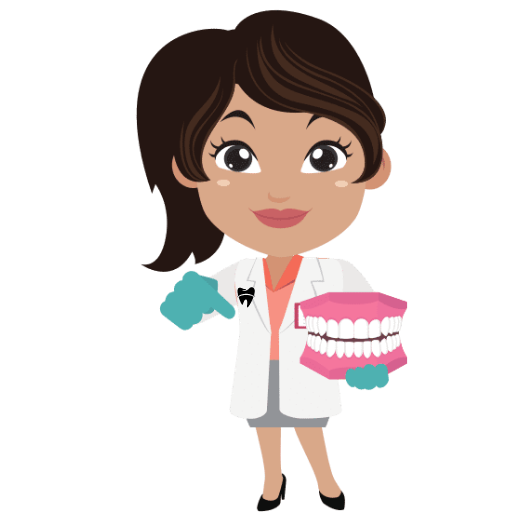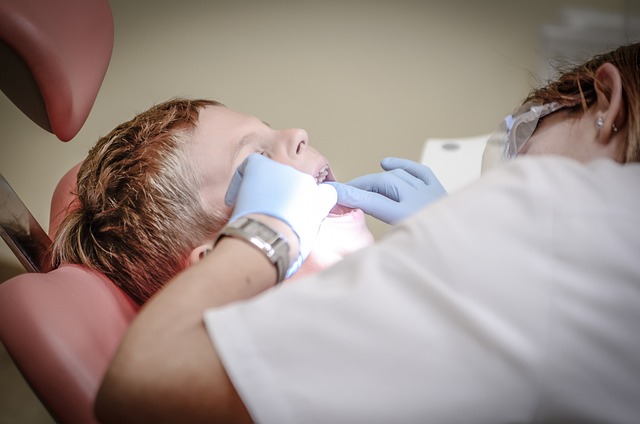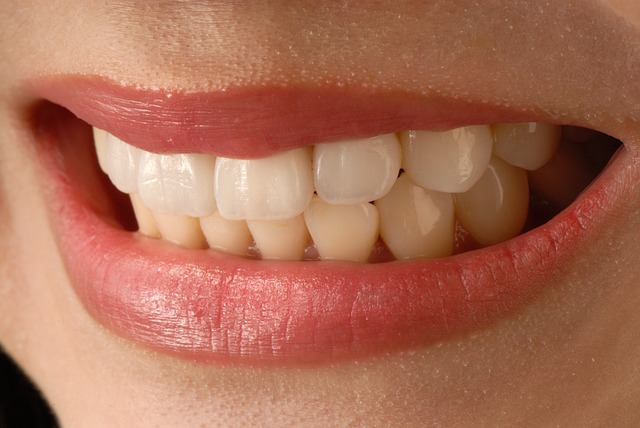Discover the orthodontic insights on whether veneers can effectively fix an underbite. Learn how this dental procedure can potentially transform your smile.
1. Understanding the Underbite: Causes and Concerns
An underbite is a dental condition where the lower teeth protrude beyond the upper teeth, causing an imbalance in the jaw alignment. It’s essential to understand the causes and concerns associated with underbites to address them effectively.
Causes:
Underbites can occur due to various factors, including:
- Genetic predisposition: In some cases, underbites are hereditary, passing from parents to their children.
- Abnormal jaw growth: Irregular growth of the upper or lower jaw can lead to an underbite.
- Persistent thumb sucking: Prolonged thumb sucking or pacifier use can affect the alignment of teeth and jaw.
- Tongue thrusting: Habitual pushing of the tongue against the front teeth can contribute to an underbite formation.
Concerns:
Underbites may cause several problems, such as:
- Poor dental aesthetics: The misalignment caused by an underbite can affect the appearance of your smile.
- Speech difficulties: Severity of underbite can impact speech, making certain sounds more challenging to articulate.
- Chewing and digestion issues: Misaligned jaws can hinder proper chewing, leading to digestion problems.
- Increased risk of dental problems: Crooked teeth resulting from an underbite can make cleaning more difficult, increasing the likelihood of tooth decay and gum disease.
2. Exploring Orthodontic Solutions for Underbites
Underbites occur when the lower front teeth protrude past the upper teeth. They can cause issues with chewing, speaking, and even self-confidence. If you or someone you know is struggling with an underbite, there are several orthodontic solutions that can help correct this misalignment.
Invisalign: This innovative orthodontic treatment uses a series of clear aligners to gradually shift the teeth into their proper position. Invisalign is virtually invisible, comfortable, and can be removed for eating and brushing.
Traditional braces: Braces are suitable for more severe underbites. They consist of metal brackets and wires that apply gentle pressure to move the teeth. Although they may be more noticeable than Invisalign, traditional braces are highly effective in correcting underbites.
- Surgery:
If the underbite is caused by jaw misalignment, orthognathic surgery may be recommended. This procedure repositions the jaws for a more balanced bite. It is often used in conjunction with braces to achieve optimal results.
- Functional appliances:
Functional appliances like headgear or Herbst appliances can be used to correct underbites in growing children. These devices work by guiding the growth of the jaw and promoting proper alignment.
3. Veneers vs. Braces: Which Can Correct an Underbite?
Correcting an underbite is a common concern for many individuals seeking dental treatment. Two popular options often discussed are veneers and braces. Understanding the key differences between these two treatments can help you make an informed decision regarding the best approach for your underbite.
Veneers:
- Veneers are thin shells made of porcelain or composite resin that are applied to the front surface of teeth.
- Veneers can improve the appearance of misaligned teeth, including those affected by an underbite.
- This cosmetic solution provides a quick and minimally invasive way to correct the appearance of an underbite by reshaping and aligning the front teeth.
- However, veneers are primarily cosmetic and do not address the root cause of the underbite or correct the jaw misalignment.
Braces:
- Braces are orthodontic appliances that use brackets, wires, and bands to gradually shift and align teeth over time.
- For individuals with a more pronounced underbite caused by jaw misalignment, braces are often the more suitable option.
- Braces apply continuous gentle pressure to gradually move the teeth and jaws into proper alignment, correcting the underbite at its source.
- The treatment duration for braces can vary, typically ranging from several months to a few years, depending on the severity of the underbite.
4. The Role of Veneers in Underbite Correction
Veneers are a popular and effective solution for correcting underbites, a dental condition where the lower teeth extend further forward than the upper teeth. They play a key role in achieving a balanced and symmetrical smile while improving the overall function of your bite. Here’s how veneers can help correct an underbite:
1. Alignment: Veneers can be customized to match the desired shape, size, and color of your teeth, effectively aligning them with your upper teeth. By placing veneers on your lower teeth, your bite can be adjusted, ensuring that they line up properly with your upper teeth. This correction of misalignment not only enhances your smile but can also improve chewing and speech functions.
2. Proportional correction: Underbites can often result in a less proportionate smile, with the lower jaw appearing more prominent. Veneers can be used to strategically augment the size and shape of the upper teeth, creating a more harmonious and balanced smile. By making the necessary adjustments, veneers help to achieve a natural-looking smile that complements your facial features.
5. Achieving a Balanced Bite: How Veneers Can Help
When it comes to a balanced bite, having properly aligned teeth is crucial. If you find yourself dealing with crooked, chipped, or misshapen teeth, veneers might just be the solution you’ve been searching for. Veneers are thin, custom-made shells that are bonded to the front of your teeth, instantly transforming your smile.
One of the main advantages of veneers is that they can correct minor misalignments and create a symmetrical appearance for your teeth. By adjusting the size, shape, and color of the veneers, your dentist can ensure that your bite is perfectly balanced and functional. Additionally, veneers can help resolve common dental issues such as gaps between teeth and worn edges. So, not only do veneers enhance the aesthetic appeal of your smile, but they also contribute to a more comfortable and functional bite.
6. Assessing Candidacy for Veneers as an Underbite Fix
When considering veneers as a solution for fixing an underbite, it is crucial to assess your candidacy to ensure the best results. Veneers can be a suitable option for some individuals with mild to moderate underbites, but it is important to consult with a dental professional for an accurate evaluation.
Here are some key factors to consider when assessing your candidacy for veneers as an underbite fix:
- Severity of the underbite: Veneers are generally more effective for correcting minor to moderate underbites. If you have a severe underbite, alternative treatments such as orthodontics or jaw surgery may be more appropriate.
- Oral health condition: It is essential to have good oral health before considering veneers. Any existing dental issues, such as tooth decay or gum disease, should be addressed and treated beforehand to ensure the longevity and success of your veneers.
- Tooth structure: Veneers require a certain amount of healthy tooth structure for proper attachment. If your teeth are extensively damaged, decayed, or have large fillings, your dentist may recommend other options.
By considering these factors and consulting with a dental professional, you can determine if veneers are the right solution for your underbite. Remember, individual cases vary, so it is crucial to receive a personalized assessment to make an informed decision.
7. The Treatment Process: Applying Veneers for Underbite Correction
Underbite is a dental condition where the lower teeth overlap the upper teeth, causing an uneven bite. Veneers, thin shells made of porcelain or composite resin, can be used to correct this issue. The process of applying veneers to correct an underbite involves several steps.
Firstly, a thorough evaluation of the patient’s teeth and bite is conducted by a dentist. This includes taking X-rays, impressions, and photographs to assess the severity of the underbite. The dentist will then develop a treatment plan tailored to the patient’s specific needs.
- Preparing the Teeth: Before the veneers can be applied, a small amount of enamel is carefully removed from the front of the teeth. This is done to make room for the veneers and ensure a natural, comfortable fit.
- Taking Impressions: Using dental putty or digital scanners, impressions of the teeth are taken to create custom-made veneers that perfectly match the patient’s natural teeth.
- Temporary Veneers: While the permanent veneers are being created in a dental laboratory, temporary veneers may be placed on the teeth to protect them and improve the appearance.
- Bonding the Veneers: Once the custom veneers are ready, the temporary ones are removed, and the permanent veneers are carefully bonded to the teeth using a strong dental adhesive.
By applying veneers, a dentist can effectively correct an underbite, improving both the functionality and aesthetics of the patient’s smile. It is essential to consult with a qualified dentist to determine whether veneers are the right treatment option for your specific underbite condition.
8. Maintaining Long-Term Results with Veneers for Underbites
Once you have successfully corrected your underbite with veneers, it is essential to maintain the long-term results to ensure the continued success of your treatment. By following a few simple guidelines, you can keep your veneers looking and functioning their best.
First and foremost, practicing good oral hygiene is crucial. Brush your teeth gently with a soft-bristle toothbrush at least twice a day. Use a non-abrasive toothpaste to avoid damaging the surface of your veneers. Flossing daily is important to remove plaque and food particles between your teeth. Consider using an antibacterial mouthwash to further clean your mouth and prevent oral health issues. Regular dental check-ups and professional cleanings should be scheduled every six months, allowing your dentist to monitor the condition of your veneers and address any concerns promptly.
9. Potential Benefits and Drawbacks of Veneers for Underbites
Veneers can be an effective solution for correcting underbites, providing both potential benefits and drawbacks to consider. It’s important to understand the advantages and disadvantages before making a decision. Here are some factors to keep in mind:
Potential Benefits:
- Veneers can improve the alignment of your teeth, helping to correct the underbite and enhance your smile.
- They offer a minimally invasive treatment option compared to more extensive orthodontic procedures or surgeries.
- Veneers are custom-made to fit your individual teeth, ensuring a natural and comfortable fit.
- The overall process is usually quick, as veneers can be applied in just a few appointments, saving you time and reducing discomfort.
Potential Drawbacks:
- The cost of veneers can be a significant consideration, as they are generally more expensive than other underbite correction methods.
- Veneers are a permanent solution, meaning that once they are applied, you cannot reverse the process.
- In some cases, the placement of veneers may require the removal of a small amount of tooth enamel, which can lead to increased sensitivity.
- While veneers can improve the appearance of your teeth, they may not address the underlying cause of the underbite, necessitating additional treatment in the future.
Considering these potential benefits and drawbacks will help you make an informed decision about whether veneers are the right option for correcting your underbite. It’s always recommended to consult with a qualified dental professional who can assess your specific situation and provide personalized advice.
10. Expert Insights: Orthodontists’ Perspectives on Veneers as Underbite Solutions
In order to provide expert insights on veneers as underbite solutions, we reached out to a group of experienced orthodontists. These professionals specialize in diagnosing and treating various dental conditions, including underbites. Here are some key perspectives shared by these experts:
- Veneers as a cosmetic alternative: Orthodontists unanimously agree that veneers can be a suitable option for individuals with minor underbites who are primarily seeking cosmetic improvements. By placing thin porcelain shells on the front surface of the teeth, veneers can help create the illusion of a more aligned bite. However, it’s important to note that veneers only address the appearance of an underbite and do not correct the underlying skeletal or dental issues causing it.
- Limitations of veneers: While veneers can enhance the aesthetics of a smile, they cannot correct functional problems associated with underbites. Orthodontists emphasize that more severe underbite cases may require comprehensive orthodontic treatment, such as braces or jaw surgery, to achieve functional and long-lasting results. It is crucial to consult with an orthodontist who can assess the severity and cause of the underbite before considering veneers as a potential solution.
By seeking professional advice from orthodontists, individuals can make informed decisions regarding the use of veneers as a potential solution for underbites. Orthodontists stress the importance of a comprehensive evaluation to determine the most suitable treatment plan that addresses both cosmetic concerns and underlying functional issues.
In conclusion, veneers cannot fix an underbite. Orthodontic treatment like braces or jaw surgery is the recommended solution. Seek advice from a professional orthodontist for the most effective way to correct an underbite. Take the necessary steps towards achieving a confident and healthy smile.






